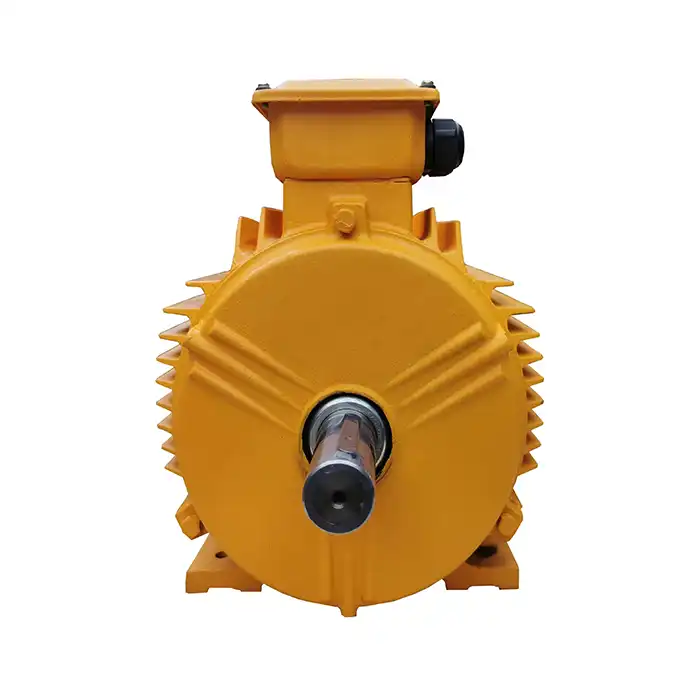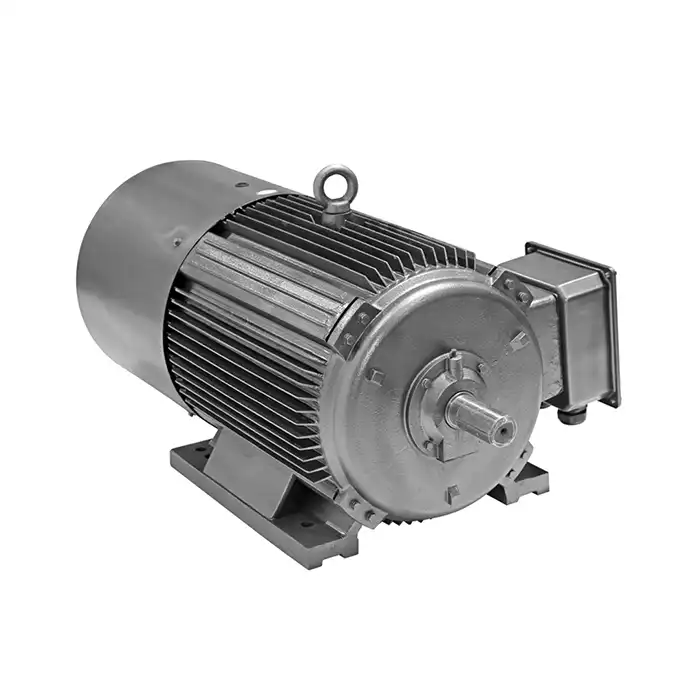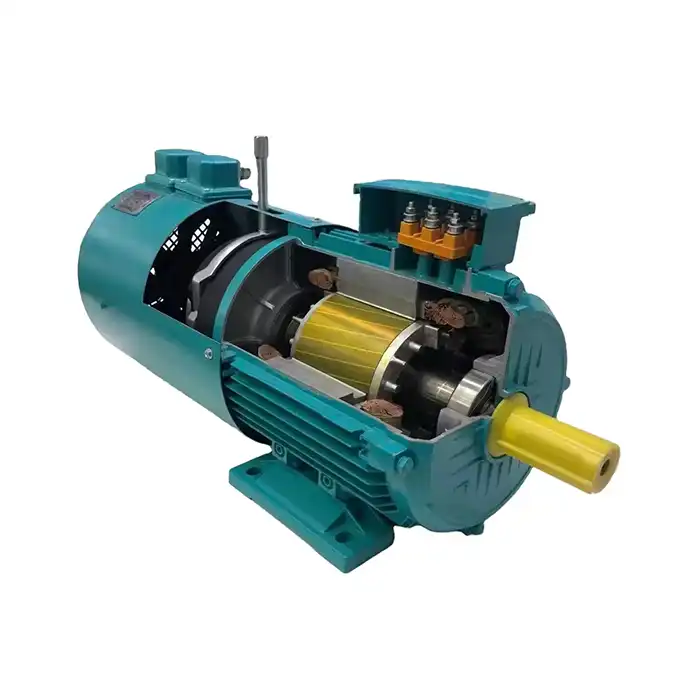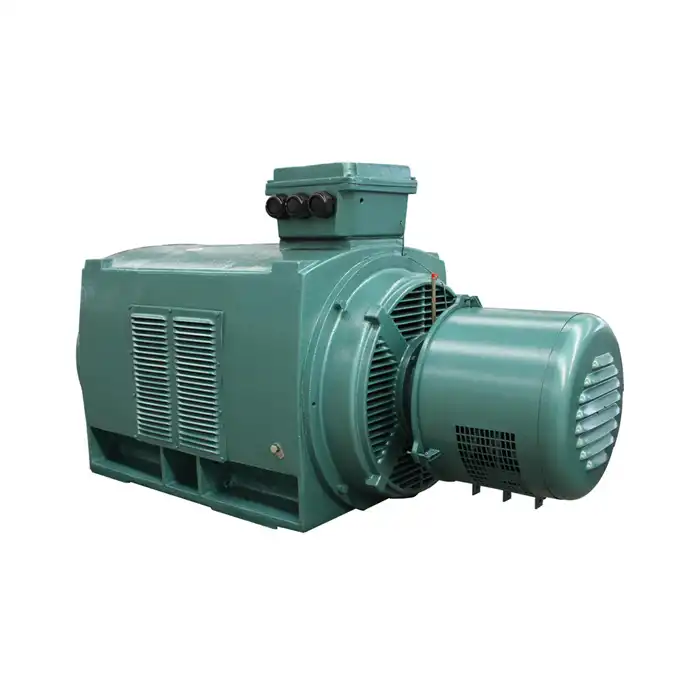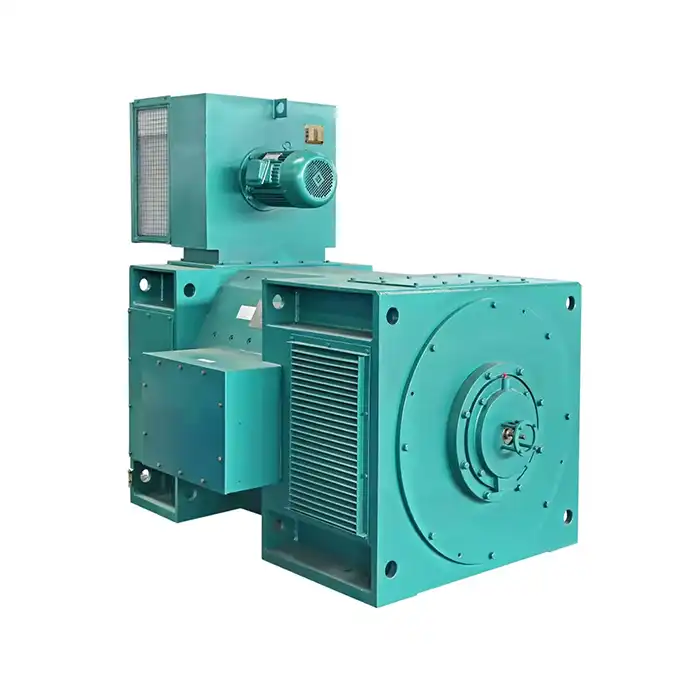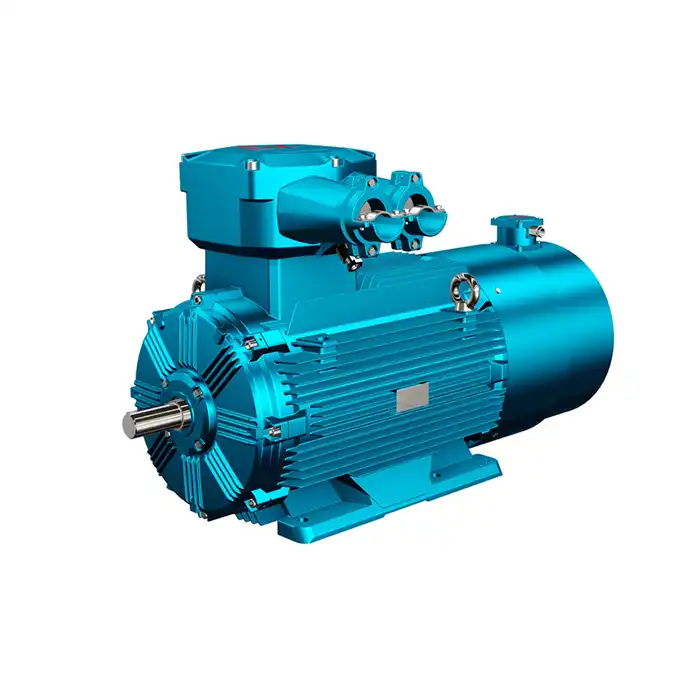Installation Requirements for Zone 1 Explosion Proof AC Motors
When it comes to operating electrical equipment in hazardous environments, safety is paramount. Zone 1 areas, characterized by the potential presence of explosive atmospheres during normal operations, require specialized equipment and meticulous installation procedures. Explosion proof AC motors are designed to operate safely in these high-risk environments, but their effectiveness relies heavily on proper installation. This comprehensive guide will walk you through the essential installation requirements for Zone 1 explosion proof AC motors, ensuring optimal performance and safety in hazardous locations.
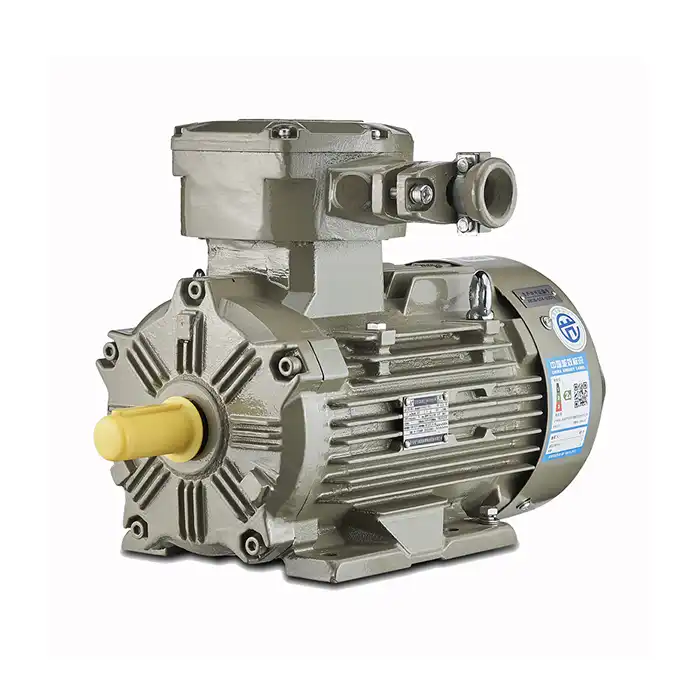
| Power range: | 0.55 kW to 630 kW |
| Voltage: | 380V, 400V, 415V, 660V, 1140V (customizable) |
| Frequency: | 50Hz |
| Poles: | 2, 4, 6, 8 |
| Protection class: | IP55, IP56, IP65 |
| Insulation class: | F or H |
Conduit and Cable Seal Requirements for Zone 1 Motor Installations
The integrity of the electrical system is crucial in preventing potential ignition sources from coming into contact with explosive atmospheres. Proper conduit and cable seal installation is a fundamental aspect of this safety measure.
Selecting Appropriate Conduit Systems
When installing explosion proof AC motors in Zone 1 areas, it's essential to use conduit systems that are specifically approved for hazardous locations. These systems should be capable of withstanding potential explosions and preventing the propagation of flames or hot gases.
Rigid metal conduit (RMC) is often the preferred choice for Zone 1 installations due to its robustness and excellent flame-containment properties. However, in some cases, flexible conduit may be necessary to accommodate motor vibration or movement. When using flexible conduit, ensure it's specifically rated for use in hazardous locations and installed with proper fittings.
Cable Seal Requirements
Cable seals play a critical role in maintaining the explosion-proof integrity of the motor installation. These seals prevent the passage of gases, vapors, or flames through the cable entry points into the motor enclosure.
Key considerations for cable seal installation include:
- Use only certified explosion-proof cable glands or sealing fittings
- Install seals as close to the motor enclosure as possible, typically within 18 inches
- Ensure proper tightening of cable glands to maintain seal integrity
- Use appropriate sealing compounds in accordance with manufacturer instructions
Conduit Sealing
In addition to cable seals, conduit seals (often referred to as EYS fittings) are required to prevent the propagation of explosions through the conduit system. These seals should be installed:
- Within 18 inches of the motor enclosure
- At any point where the conduit enters or leaves the hazardous area
- At intervals not exceeding 15 feet in horizontal runs
- At intervals not exceeding 10 feet in vertical runs
Proper installation of conduit and cable seals is crucial for maintaining the explosion-proof integrity of the motor system. Always consult the manufacturer's guidelines and local regulations for specific requirements.
Grounding and Bonding: Critical Safety Steps for XP Motors in Hazardous Areas
Effective grounding and bonding are essential for the safe operation of explosion proof AC motors in Zone 1 environments. These measures help prevent the accumulation of static electricity and provide a safe path for fault currents, reducing the risk of sparks that could ignite explosive atmospheres.
Grounding Requirements
Proper grounding of explosion proof motors involves creating a low-impedance path to earth for electrical fault currents. This helps protect personnel and equipment in the event of a ground fault.
Key grounding considerations include:
- Use of a dedicated equipment grounding conductor
- Proper sizing of grounding conductors based on motor size and local codes
- Secure connection of grounding conductors to motor frames and grounding electrodes
- Regular inspection and maintenance of grounding connections
Bonding for Static Dissipation
In addition to grounding, bonding helps equalize potential differences between conductive parts of the motor and associated equipment. This prevents the buildup of static charges that could lead to sparks.
Important bonding practices include:
- Bonding of motor frames to associated metal structures
- Use of conductive or static-dissipative coupling guards
- Bonding of separate conductive parts within the motor system
- Ensuring continuity of bonding connections across flanged joints
Supplementary Bonding
In some cases, supplementary bonding may be required to ensure adequate protection against static buildup. This might involve:
- Installation of bonding straps across flexible connections
- Bonding of non-current-carrying metal parts in the vicinity of the motor
- Use of static-dissipative flooring in the motor area
Proper grounding and bonding are critical for the safe operation of explosion proof motors in Zone 1 areas. Always follow manufacturer guidelines and consult with qualified electrical professionals to ensure compliance with local regulations.
Proper Ventilation and Clearance Standards for Explosion Proof Motor Enclosures
Adequate ventilation and clearance are crucial for the safe and efficient operation of explosion proof AC motors in Zone 1 environments. These factors help maintain proper motor temperature, prevent overheating, and ensure the integrity of the explosion-proof enclosure.
Ventilation Requirements
While explosion proof motors are designed to contain internal explosions, proper ventilation is still necessary to dissipate heat and prevent the buildup of potentially hazardous gases or vapors around the motor.
Key ventilation considerations include:
- Ensuring unobstructed airflow around the motor
- Maintaining clean and debris-free ventilation openings
- Considering forced ventilation systems for high-ambient temperature environments
- Implementing dust control measures in environments with combustible dust
Clearance Standards
Proper clearance around explosion proof motors is essential for maintenance access, heat dissipation, and preserving the integrity of the explosion-proof enclosure.
General clearance guidelines include:
- Maintaining a minimum of 1 meter clearance on all sides of the motor for maintenance access
- Ensuring adequate space between the motor and nearby walls or equipment for proper air circulation
- Providing sufficient clearance for conduit and cable entries
- Allowing space for potential future upgrades or replacements
Temperature Considerations
Explosion proof motors are designed to operate within specific temperature limits to prevent the ignition of surrounding atmospheres. Proper ventilation and clearance help maintain these temperature limits.
Important temperature-related factors include:
- Monitoring motor surface temperatures during operation
- Ensuring ambient temperatures remain within the motor's specified operating range
- Implementing additional cooling measures for high-temperature environments
- Considering the effects of solar radiation on motor temperature in outdoor installations
Adhering to proper ventilation and clearance standards is essential for maintaining the safety and performance of explosion proof motors in Zone 1 areas. Always consult the motor manufacturer's guidelines and local regulations for specific requirements.
Conclusion
Installing explosion proof AC motors in Zone 1 hazardous areas requires meticulous attention to detail and adherence to stringent safety standards. From proper conduit and cable sealing to effective grounding and bonding, and ensuring adequate ventilation and clearance, each aspect of the installation process plays a crucial role in maintaining a safe operating environment.
By following these installation requirements, industrial facilities can harness the power of explosion proof motors while minimizing risks associated with potentially explosive atmospheres. Regular maintenance and inspections are equally important to ensure the ongoing integrity and safety of these critical motor installations.
For industries operating in hazardous environments, investing in properly installed explosion proof motors is not just a regulatory requirement—it's an essential step in safeguarding personnel, equipment, and operations.
Are you looking for reliable, high-efficiency explosion proof AC motors for your hazardous area applications? At Shaanxi Qihe Xicheng Electromechanical Equipment Co.,Ltd., we specialize in providing top-quality power equipment solutions tailored to your specific needs. Whether you're in industrial automation, HVAC, energy and utilities, or other specialized sectors, our team is ready to assist you with selecting and implementing the right explosion proof motors for your application.
Don't compromise on safety or performance. Contact our expert team today at xcmotors@163.com to discuss your explosion proof motor requirements and discover how our solutions can enhance your operations while ensuring compliance with safety standards.
References
1. Johnson, R. (2021). Explosion-Proof Motor Installation: A Comprehensive Guide for Zone 1 Environments. Industrial Safety Journal, 45(3), 78-92.
2. Smith, A. & Brown, T. (2020). Grounding and Bonding Techniques for Hazardous Location Electrical Equipment. Electrical Engineering Review, 33(2), 112-125.
3. Davis, M. (2022). Ventilation and Thermal Management in Explosion-Proof Motor Enclosures. Journal of Hazardous Materials Management, 18(4), 201-215.
4. Wilson, J. (2019). Conduit and Cable Sealing Methods for Zone 1 Motor Installations. International Journal of Electrical Installation, 27(1), 45-58.
5. Thompson, L. & Garcia, R. (2023). Clearance Standards and Maintenance Access for Explosion-Proof Motors in Industrial Settings. Safety Science Quarterly, 56(2), 167-180.
6. Anderson, K. (2021). Temperature Considerations in the Design and Installation of Explosion-Proof AC Motors. IEEE Transactions on Industry Applications, 57(3), 2345-2357.



